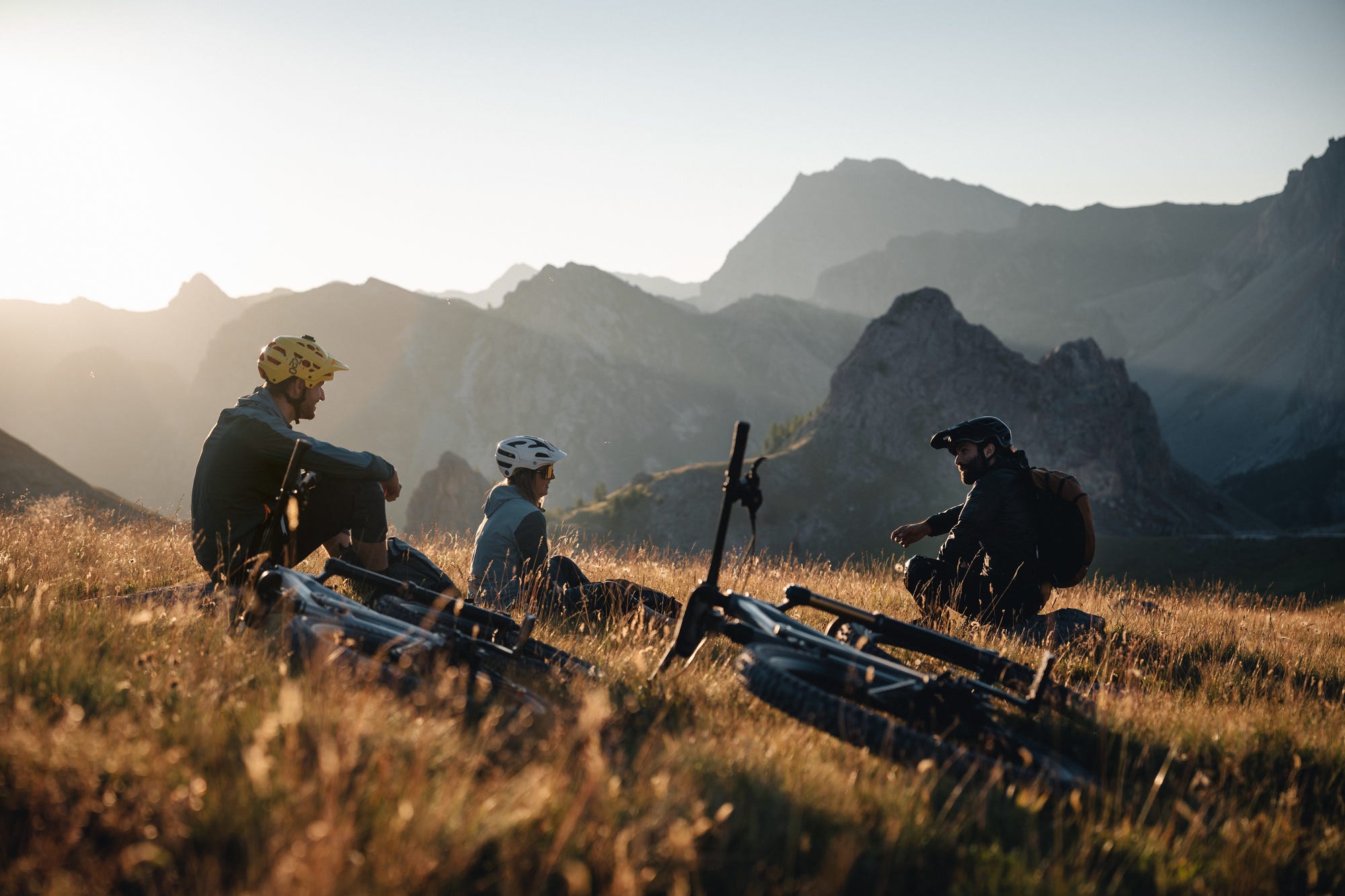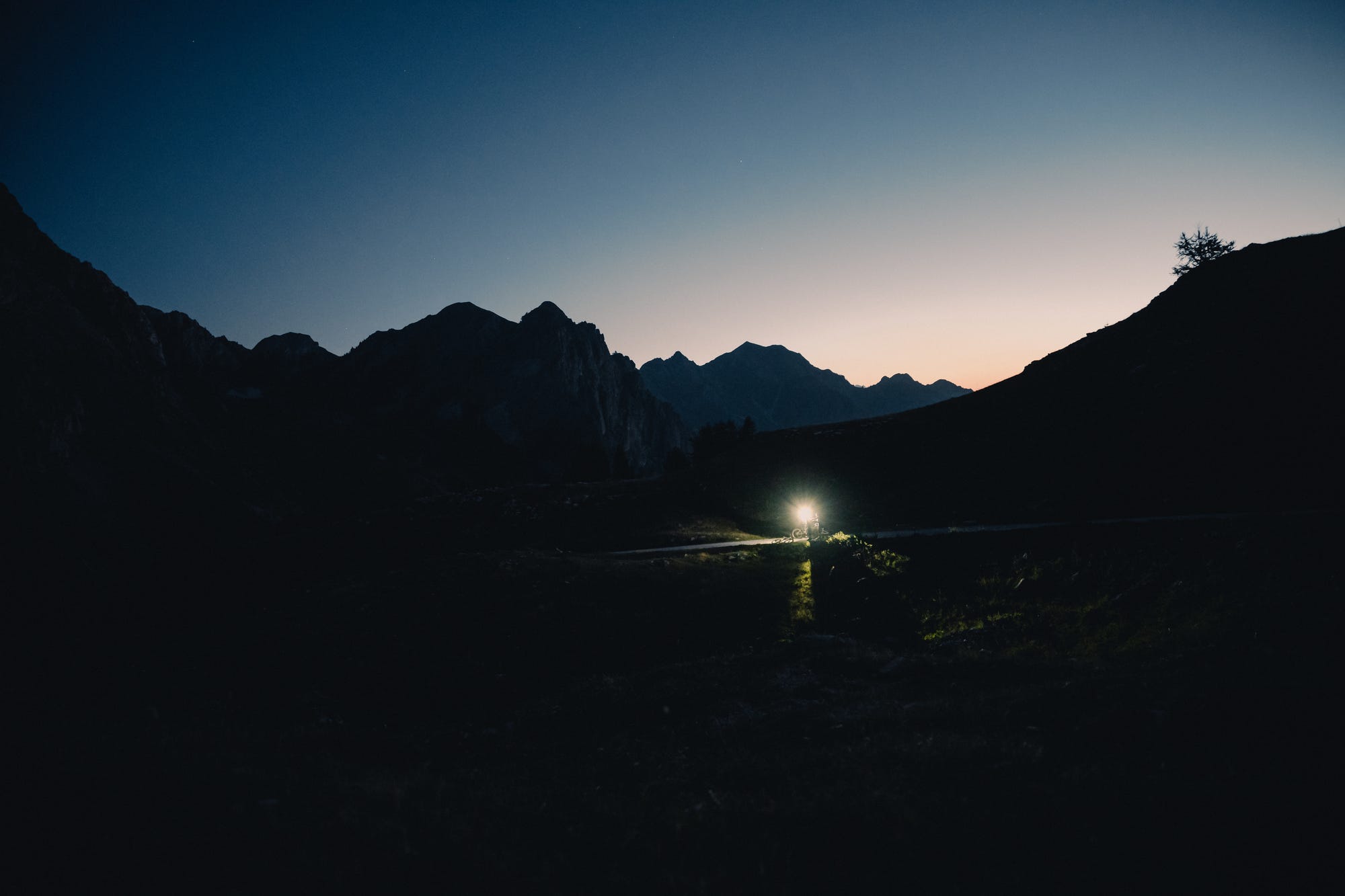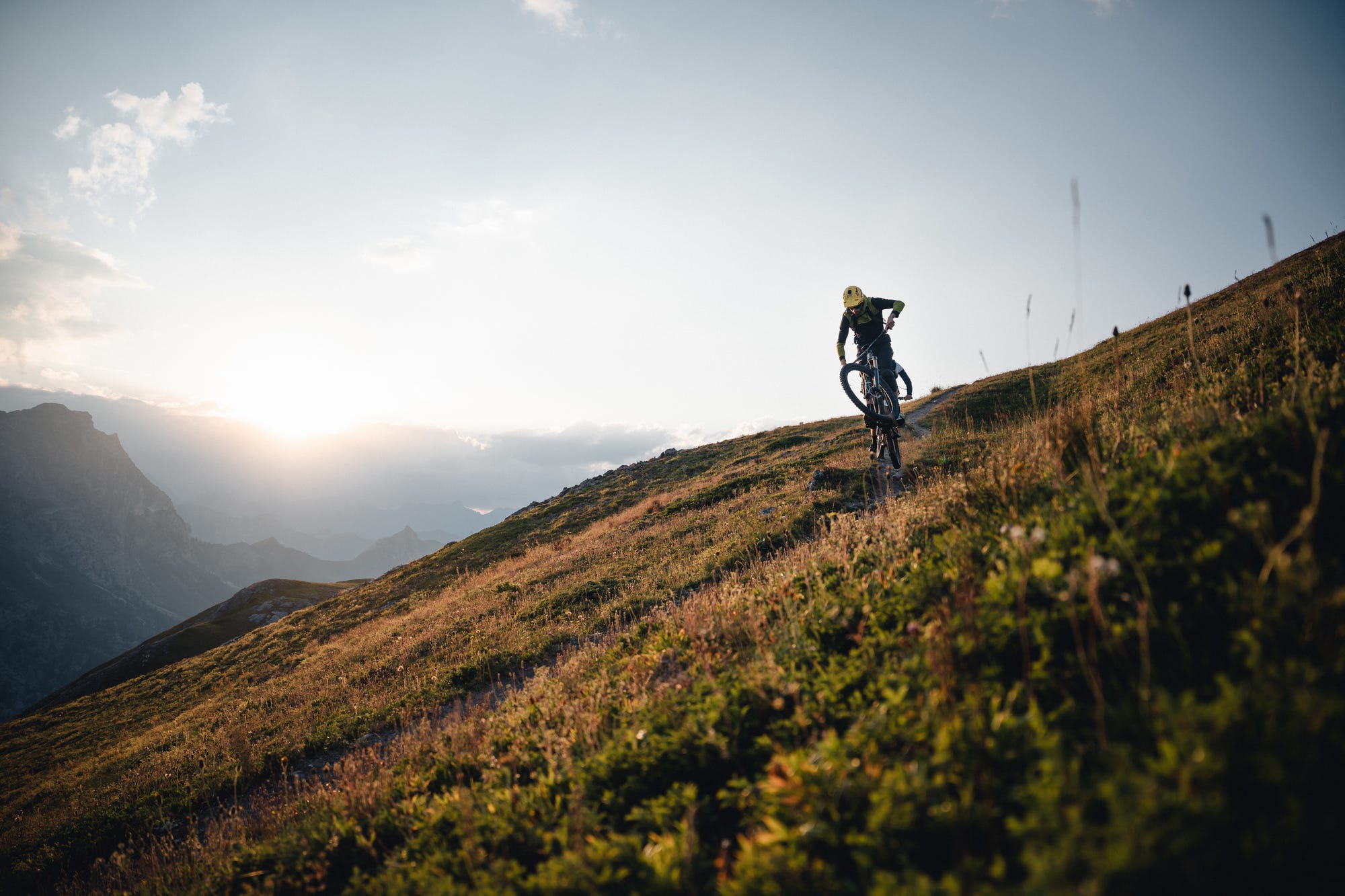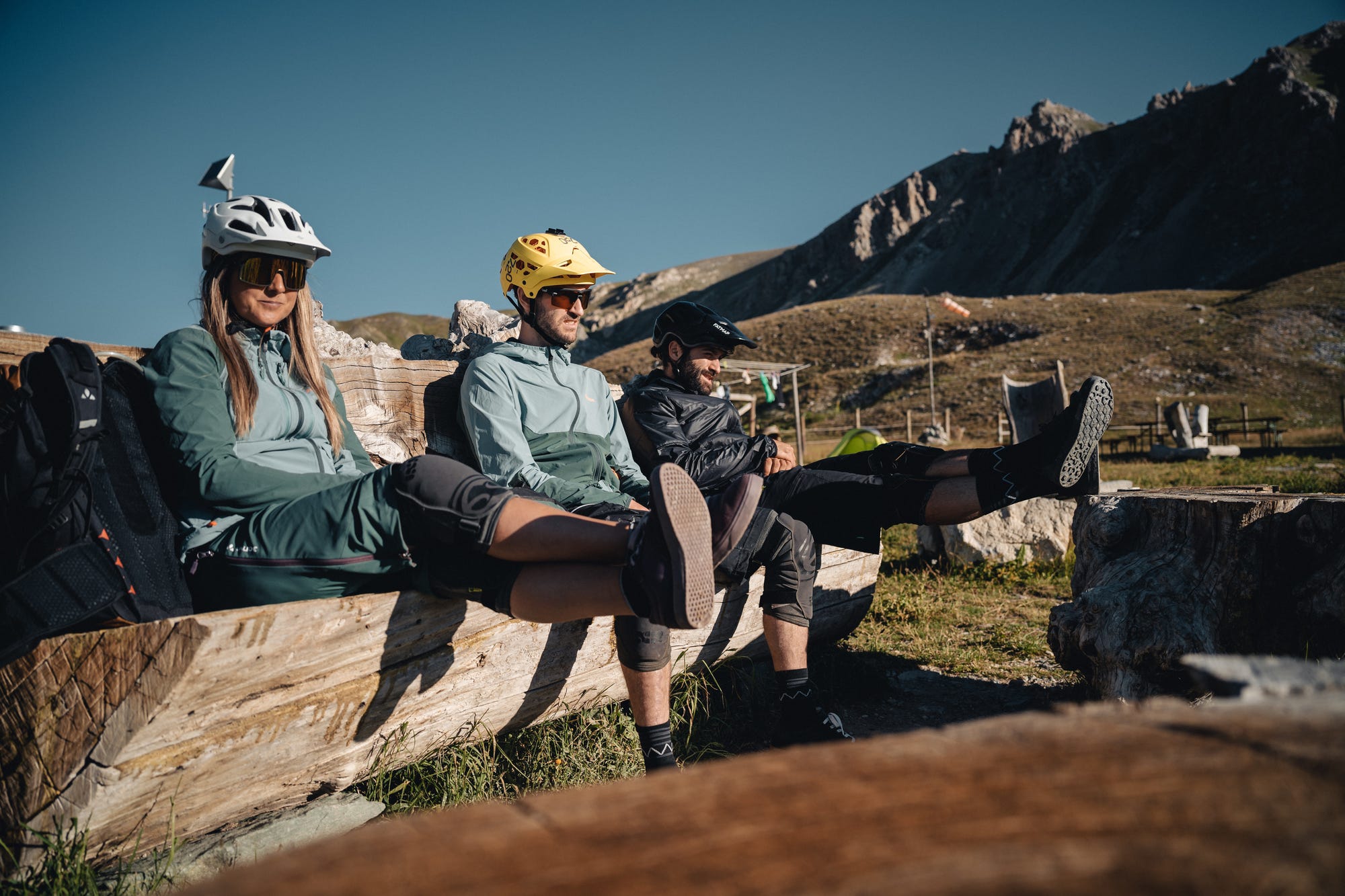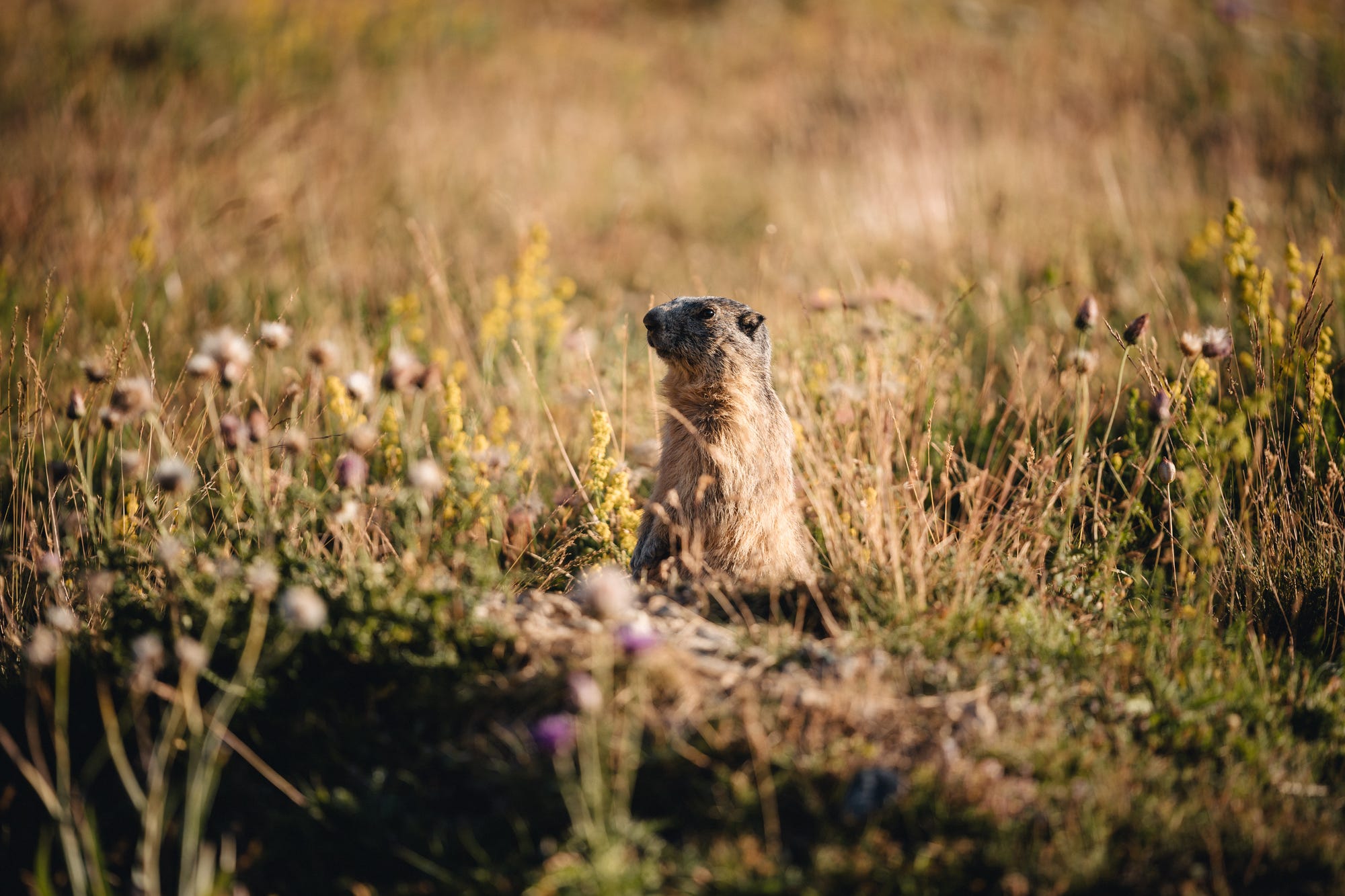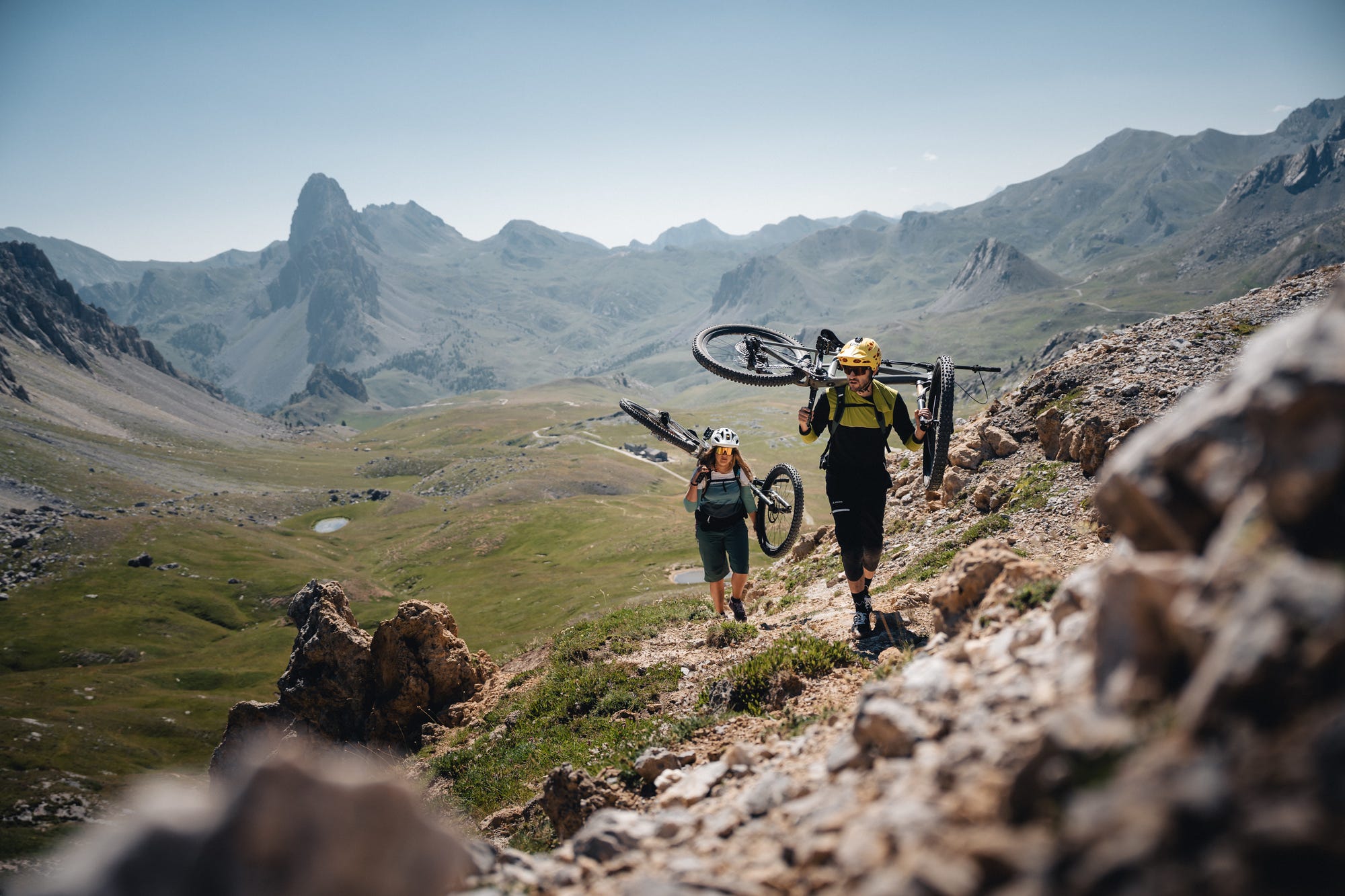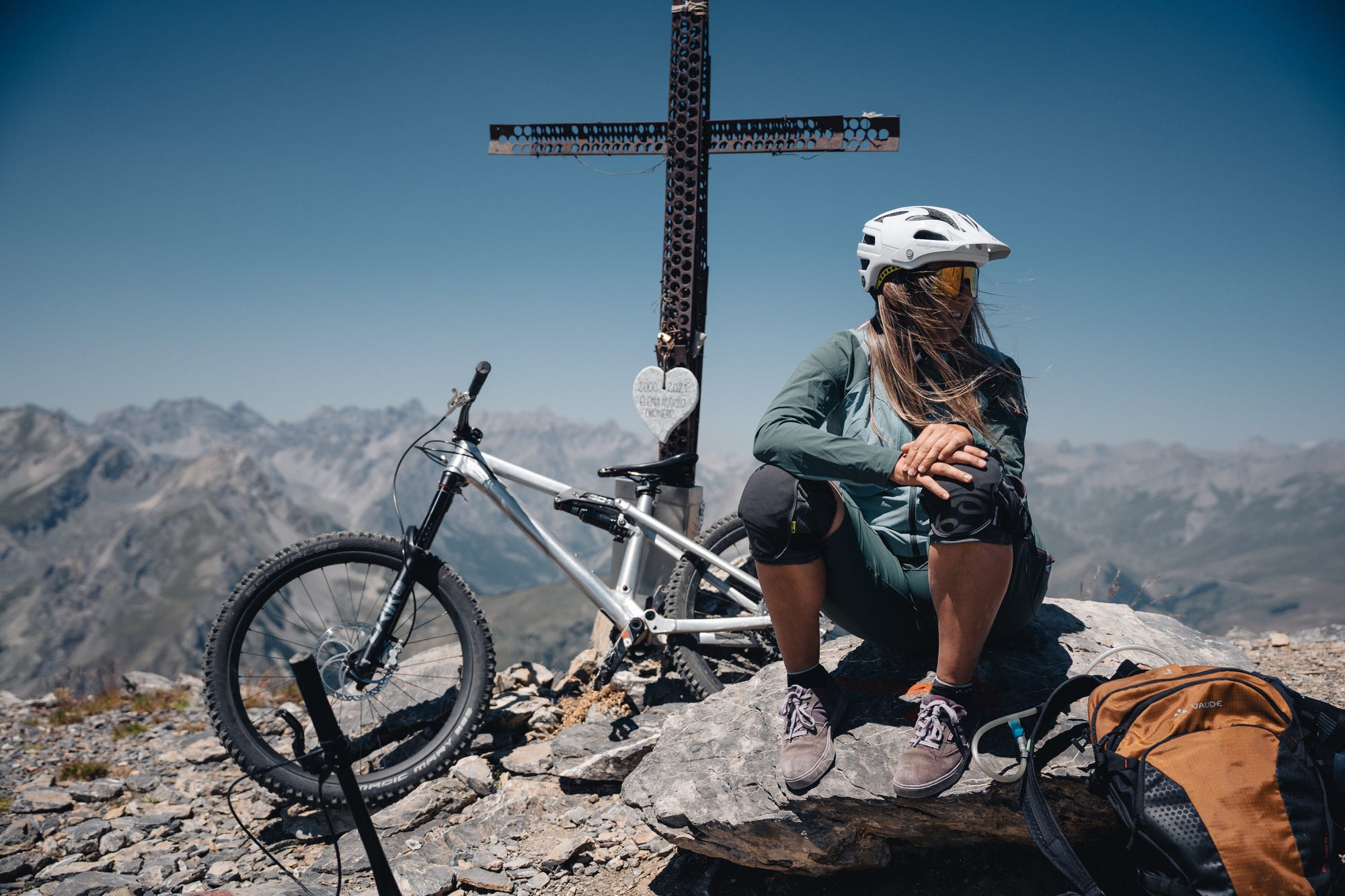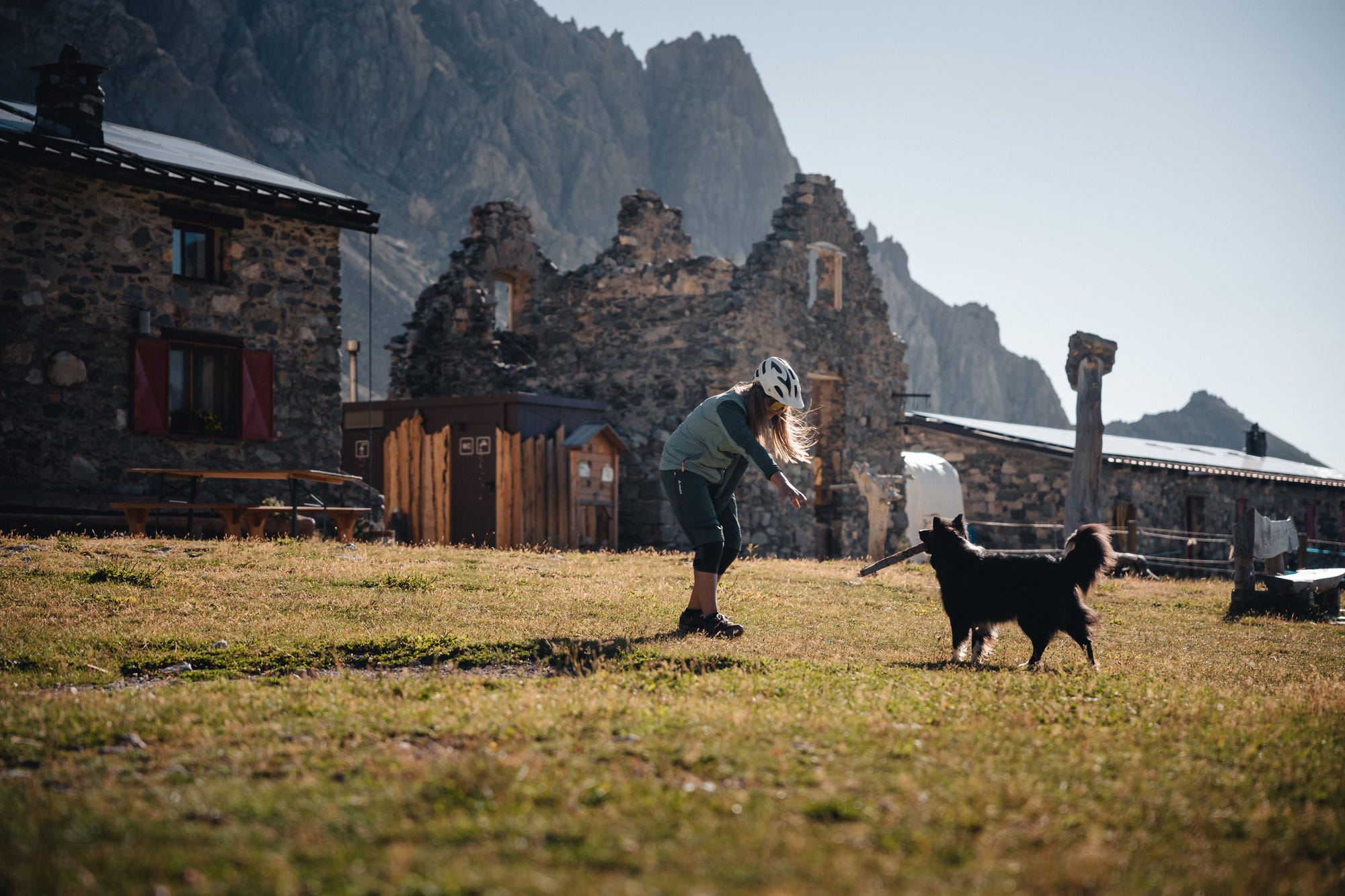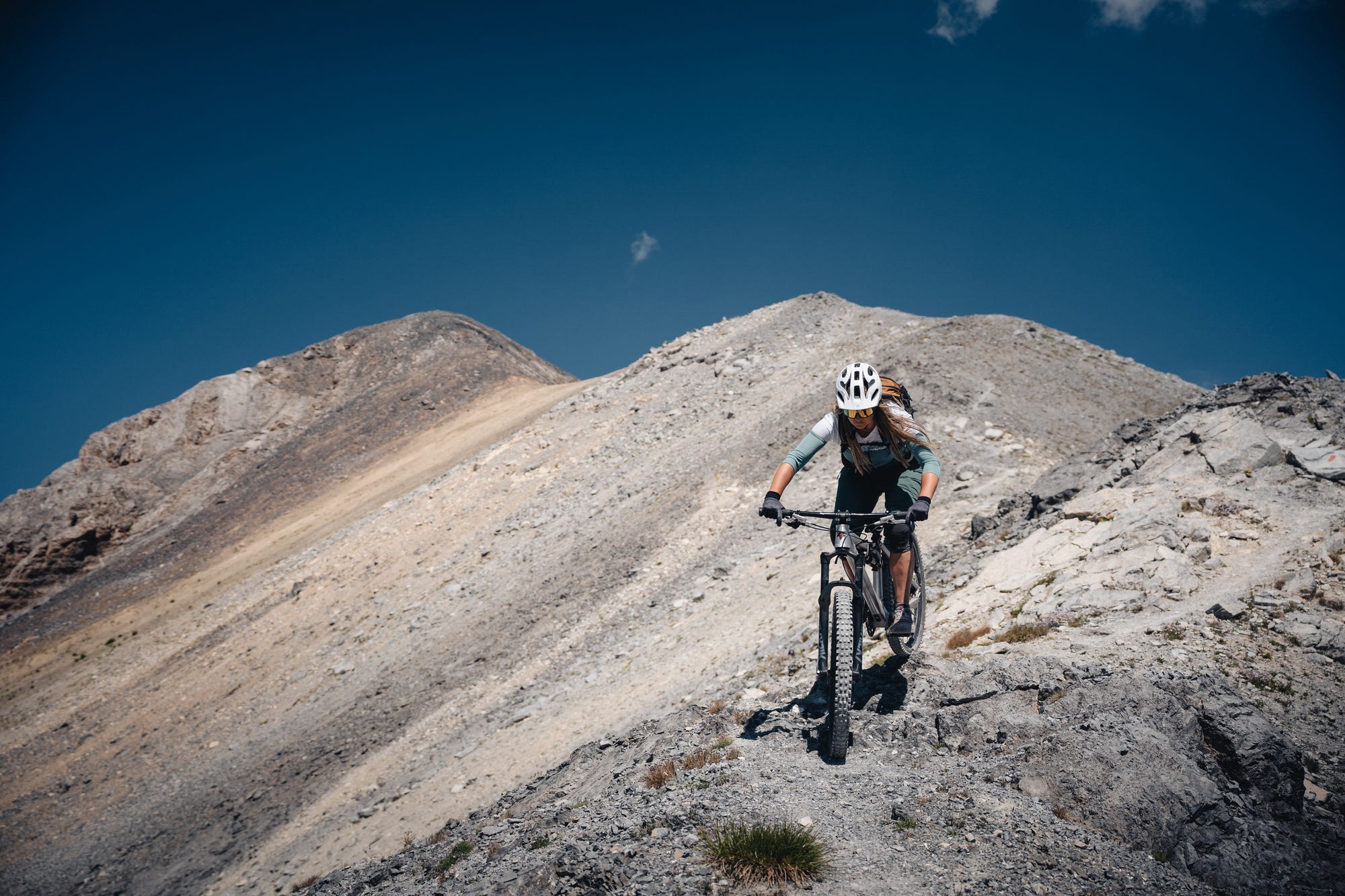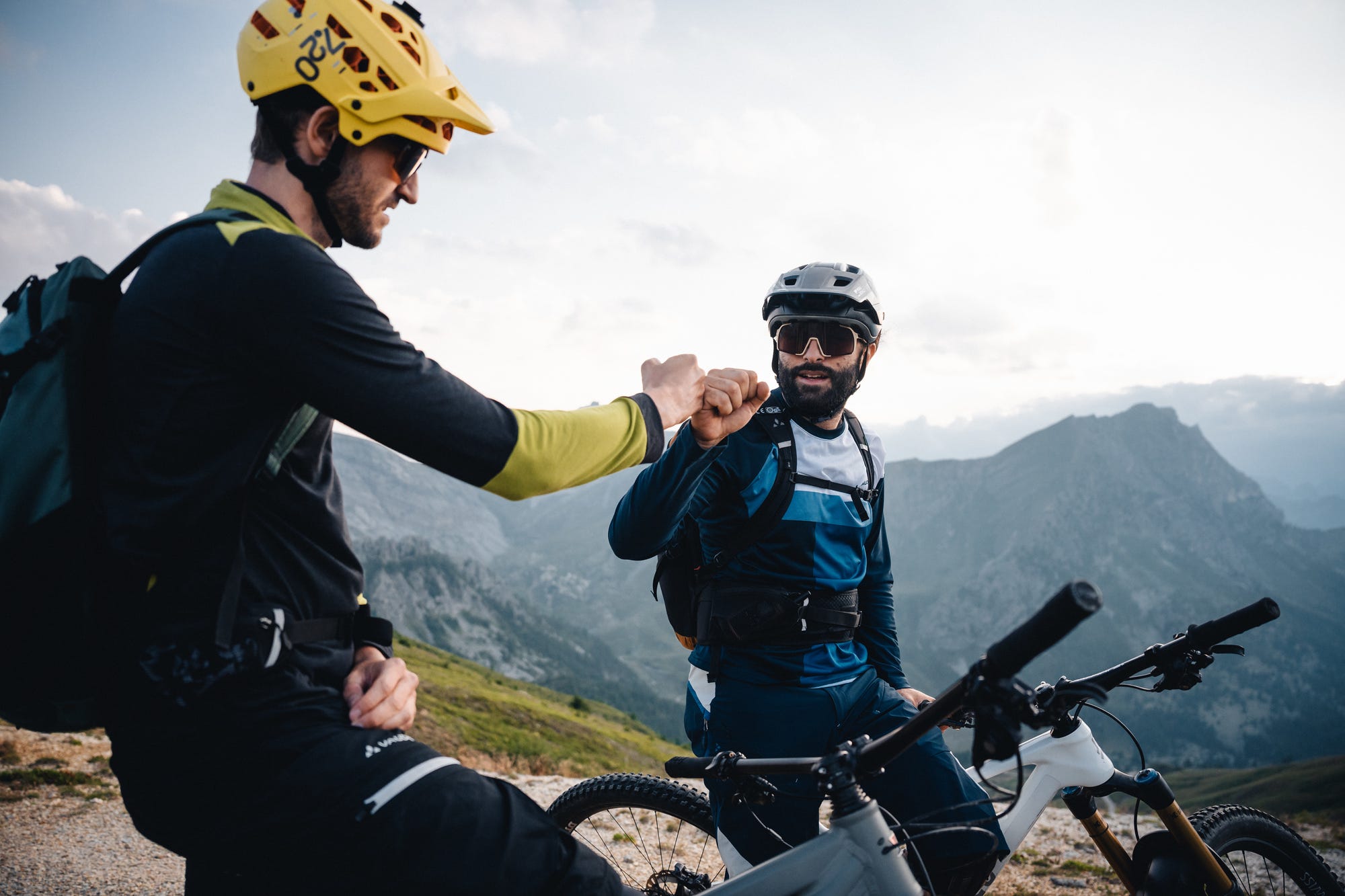Slow Tourism and Trail Building in Valle Maira
Hidden in the Piemonte region of Italy's majestic Alps is a secluded valley described to me as a nearly pristine stretch of nature. In Valle Maira, you will find few paved roads, zero chairlifts, and a small community that savors the beauty of its wild nature beyond the wealth of big tourism.
I had also heard there is a great trail network in the valley. And the locals granted mountain bikers full access, entrusting them to be knowledgeable and respectful towards nature and other outdoor users. This call of adventure made it easy to invite Stefan Eberharter, Sylvia Leimgruber, Francesco Drago, and filmer Flo Gassner for a trip to play and explore on two wheels.
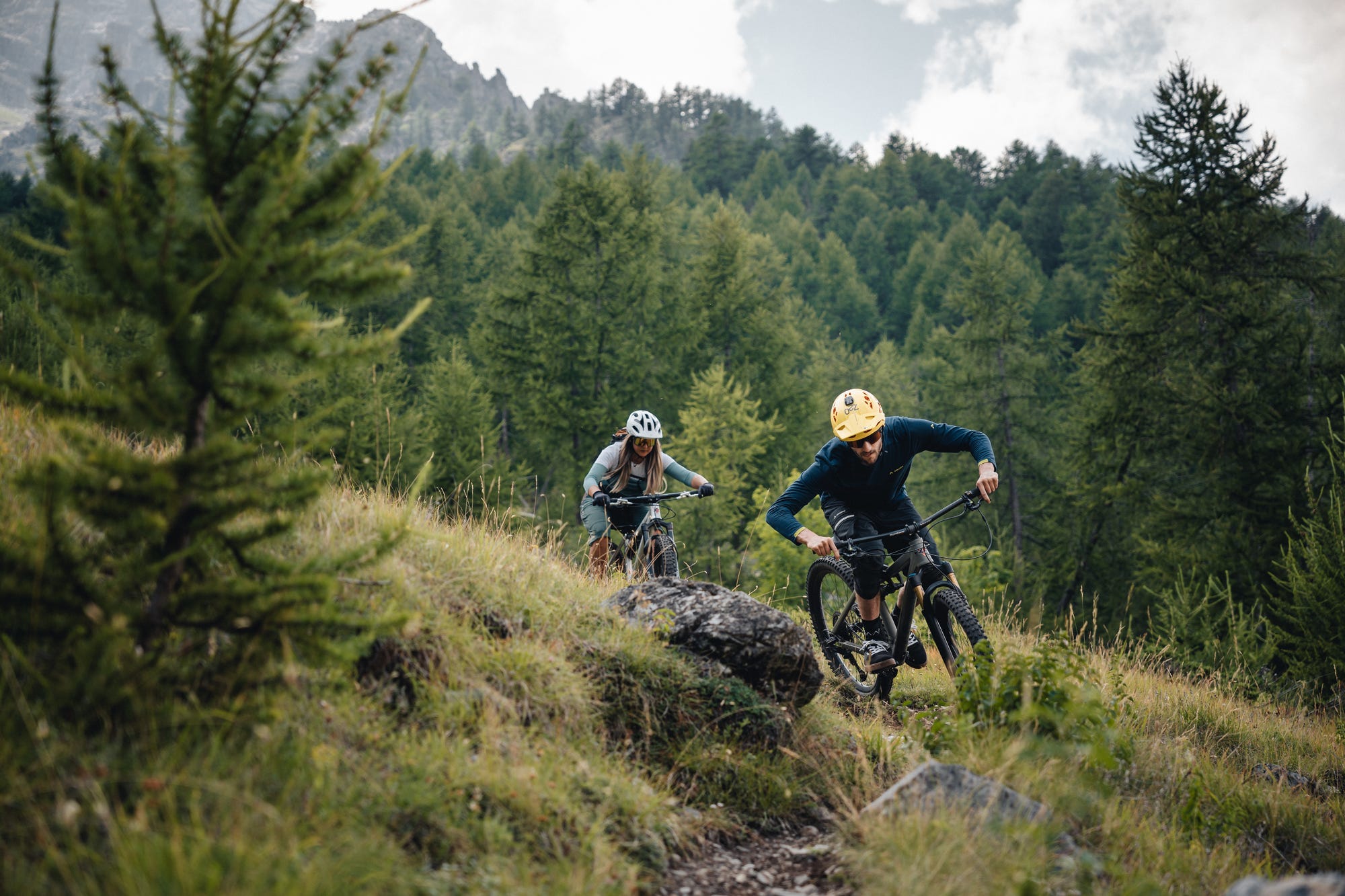

Winding into Valle Maira on a road best suited for a small Italian car, we were amazed by the solitude encompassing the few small villages nestled into flat spots along the valley. Our research showed that the steep hillsides and mountains gave way to a treasure trove of possibilities to explore.
Over the next week, we peddled as much as our time and legs allowed. And when we weren't on the bike, we relaxed with the splendor of food: homemade pasta and bread, fresh garden vegetables, and local cheeses. There was so much food that we quickly fell into the rotation of eating to ride and riding to eat. The trails always managed to pull us back onto the bike, though. There were gems like Strada Napoleonica, a 7km flow trail that by any standards is world-class, with fast berms, surfy foliage, and nosy-inducing corners. There were routes for postcard-perfect views like the Gardetta Plateau, which offered numerous options to link the breathtaking views with technical singletracks, like the one running down to Preit and then on to Canosio. And the alpine peaks were endless, like Monte Cassorso, where Stefan Eberharter put his skillful trials riding to use.
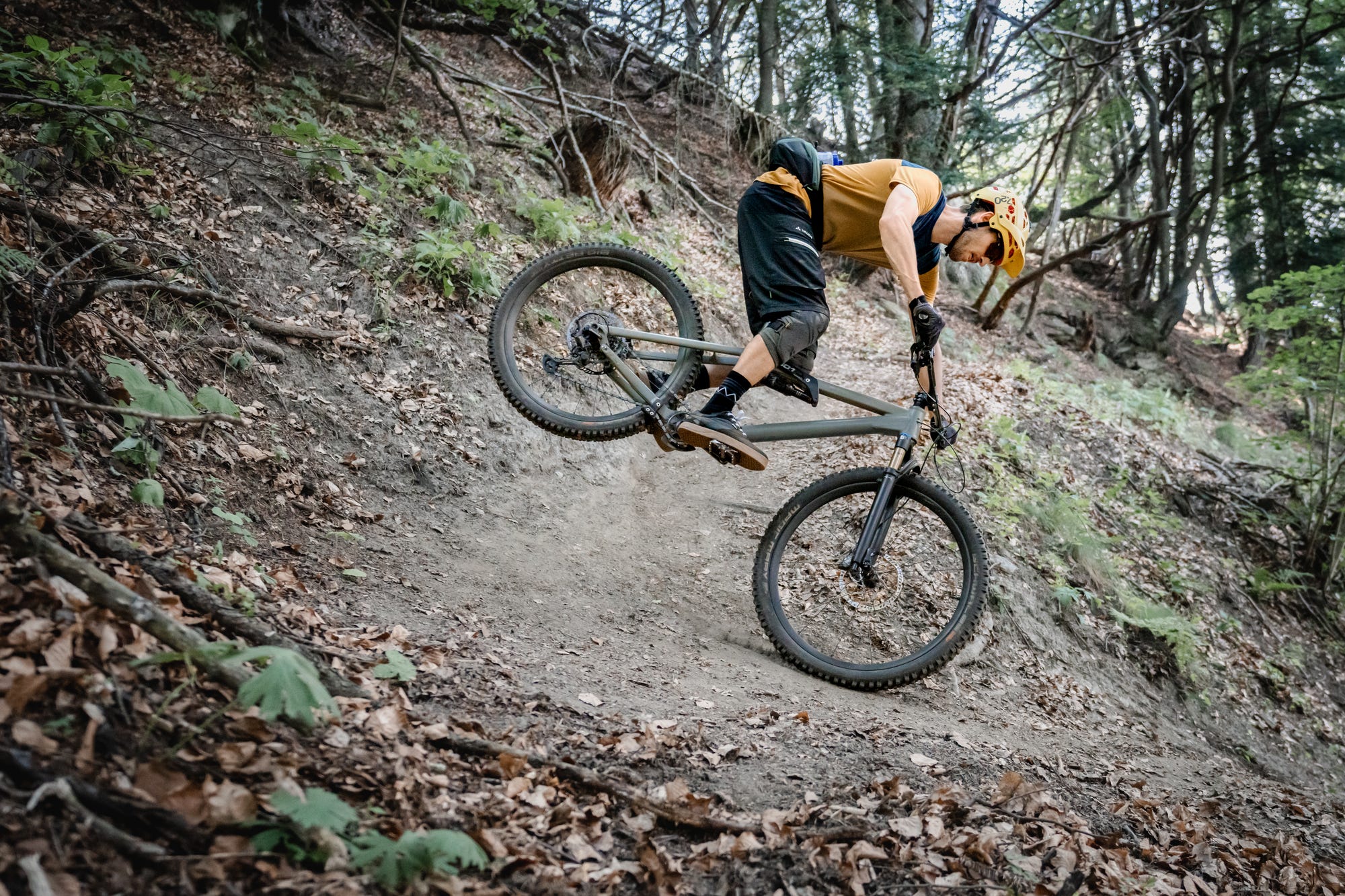

During this trip, as rides blurred into vistas, dirt, high fives, and laughs, the valley residents stayed in sharp focus, the people who give the area its unique charm and work tirelessly to balance tourism and pristine nature. These strangers felt more like old friends, sitting down to enjoy a bottle of wine at the end of the day, sharing stories and a linked passion.
With these memories, I realized that to experience Valle Maira truly; you need to embark on it as a personal adventure. In today's world, with the abundance of online resources, laying out our entire trip would reduce your enjoyment. Instead, I'd like to share some insights and highlights we gathered from the locals we met who are passionate about preserving Valle Maira's natural beauty while balancing tourism.
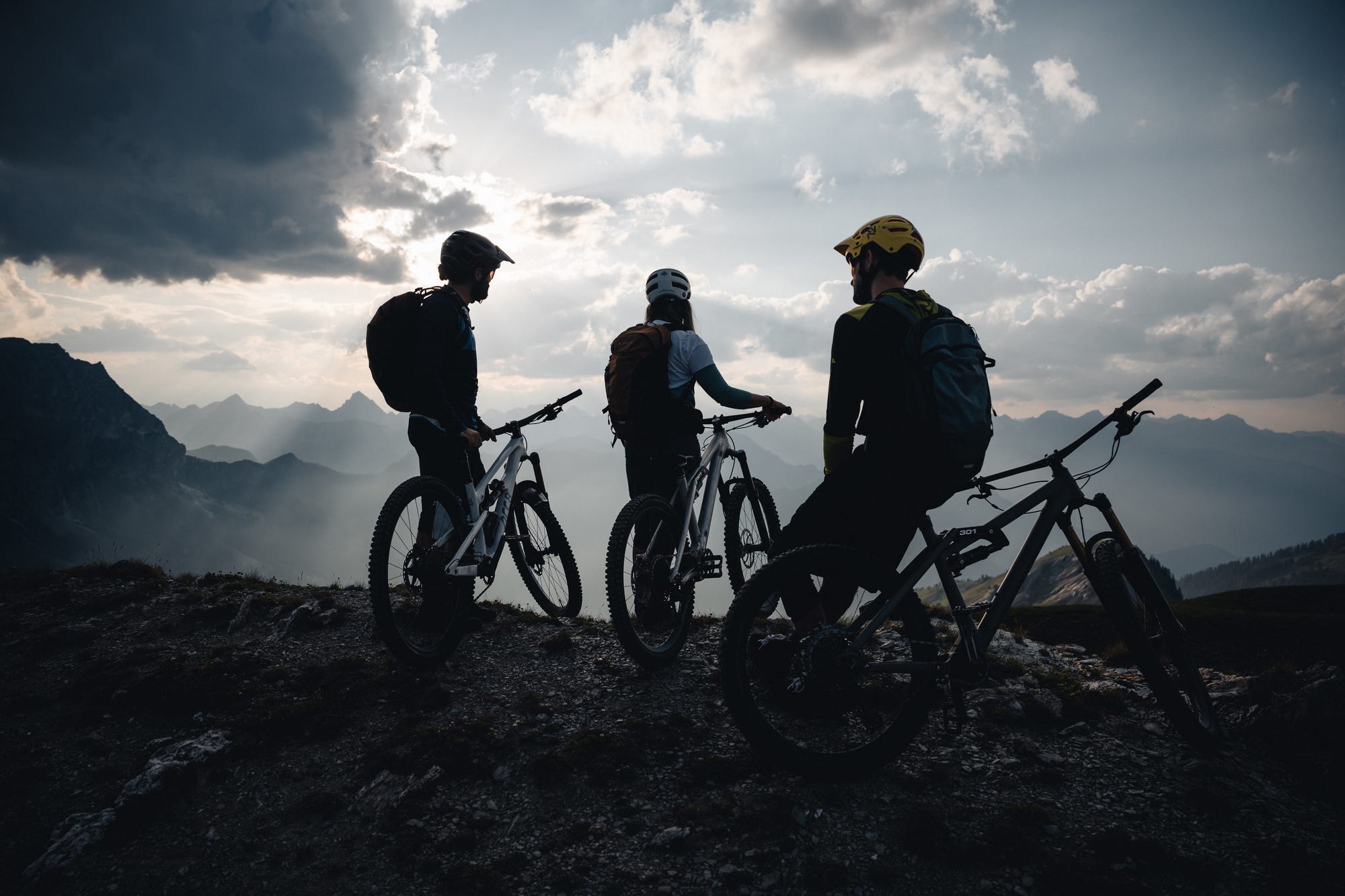

A Trail Developer's Eye
As we sat down on the patio for breakfast at Ceaglio, the vibrant presence of Peter Vogt was unmistakable as he greeted guests with genuine curiosity and asked about their plans for the day. As we sat and talked with him, we were grateful for our morning espresso as we tried to keep pace with his knowledge of the trails compounded from over 20 years of riding and exploring the valley.
In the time we spent with the cheerful 80-year-old Swiss, he told us how he discovered the valley while looking for a new location for mountain biking in Italy. Having ridden bikes around the world, discovering new places to ride before the buzz of blogs, digital guidebooks, and 3D maps, he had a solid foundation of what to look for when seeking out new places. And as he surveyed maps of the Piemonte region, the old military roads that helped transport troops along the French and Italian border stood out as good access points, and the centuries-old shepherd's trails winding across the valley skirting alpine lakes and plunging downhill beckoned. His intuition was spot on! His first visit rolled into a second and a third until finally, so many years later, he is a part-time resident in Ceaglio and practically a part of the fourth-generation family who this "Albergo Diffuso," a hotel village that keeps alive what was once a 1000-person village for its remaining 25 residents.


Peter recognized the potential of mountain biking to draw visitors, support Ceaglio, and showcase the natural beauty of Valle Maira. To share his passion, he created a map of his favorite 20 rides, all utilizing the existing paths shared with hikers. Through this, he laid the foundation for mutual respect between riders' and hikers' interests in the shared space.
Peter still rides his e-mountain bike most days. Even as he witnesses the number of hikers and bikers increasing, he still believes that mutual respect is the key to creating a shared understanding in the mountain community.
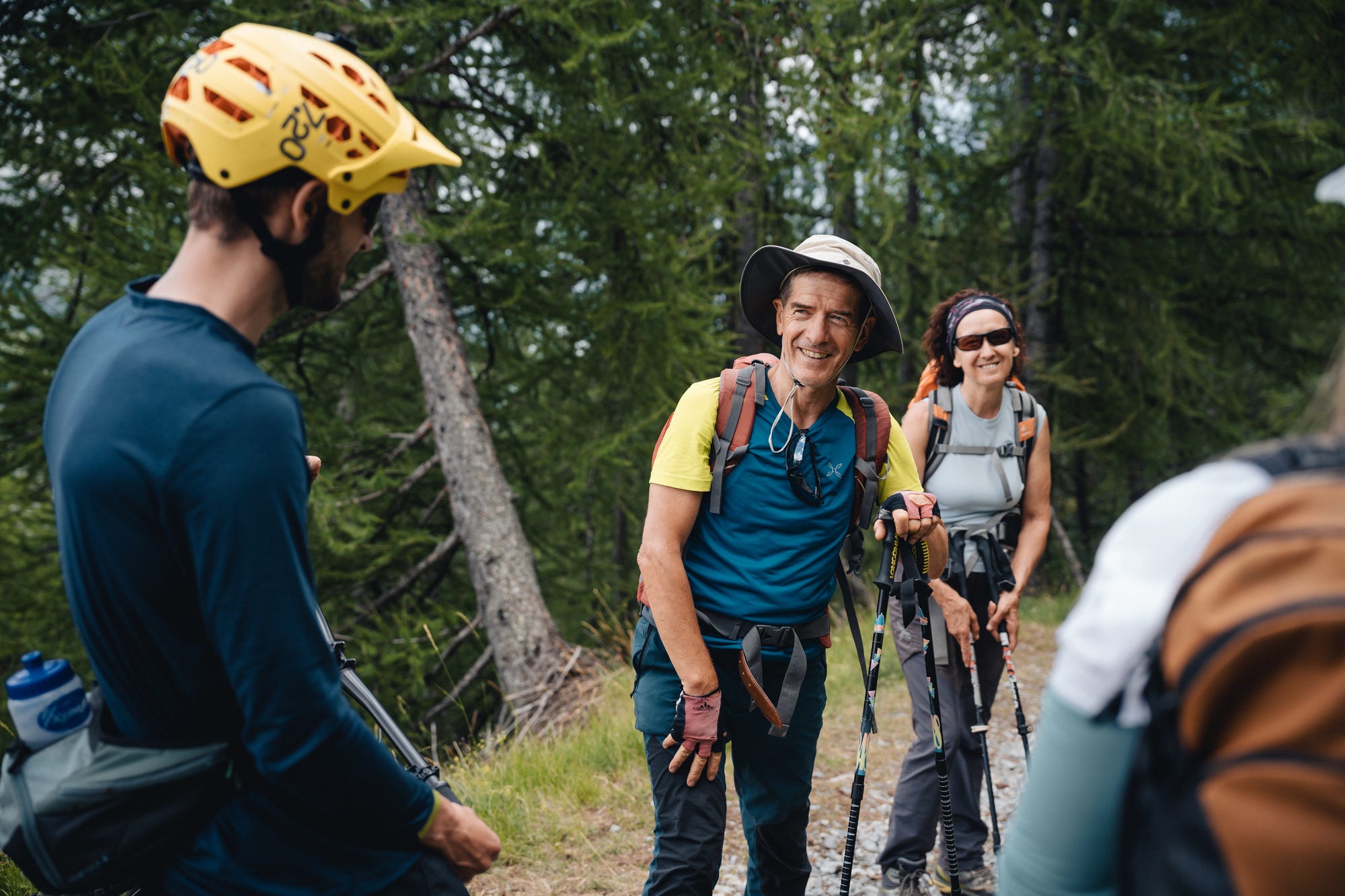

Where Are All The People?
Back on the bikes, the harmonic buzz of wheels and the squeaking of brakes came to a sharp halt as we took in the sight of the old village unraveling before us: A pastel-pink church with a peeling fresco, buildings with sagging wooden roofs atop crumbling stone walls, doors hanging ajar on rusty hinges, and everything overgrown and slowly returning to nature.
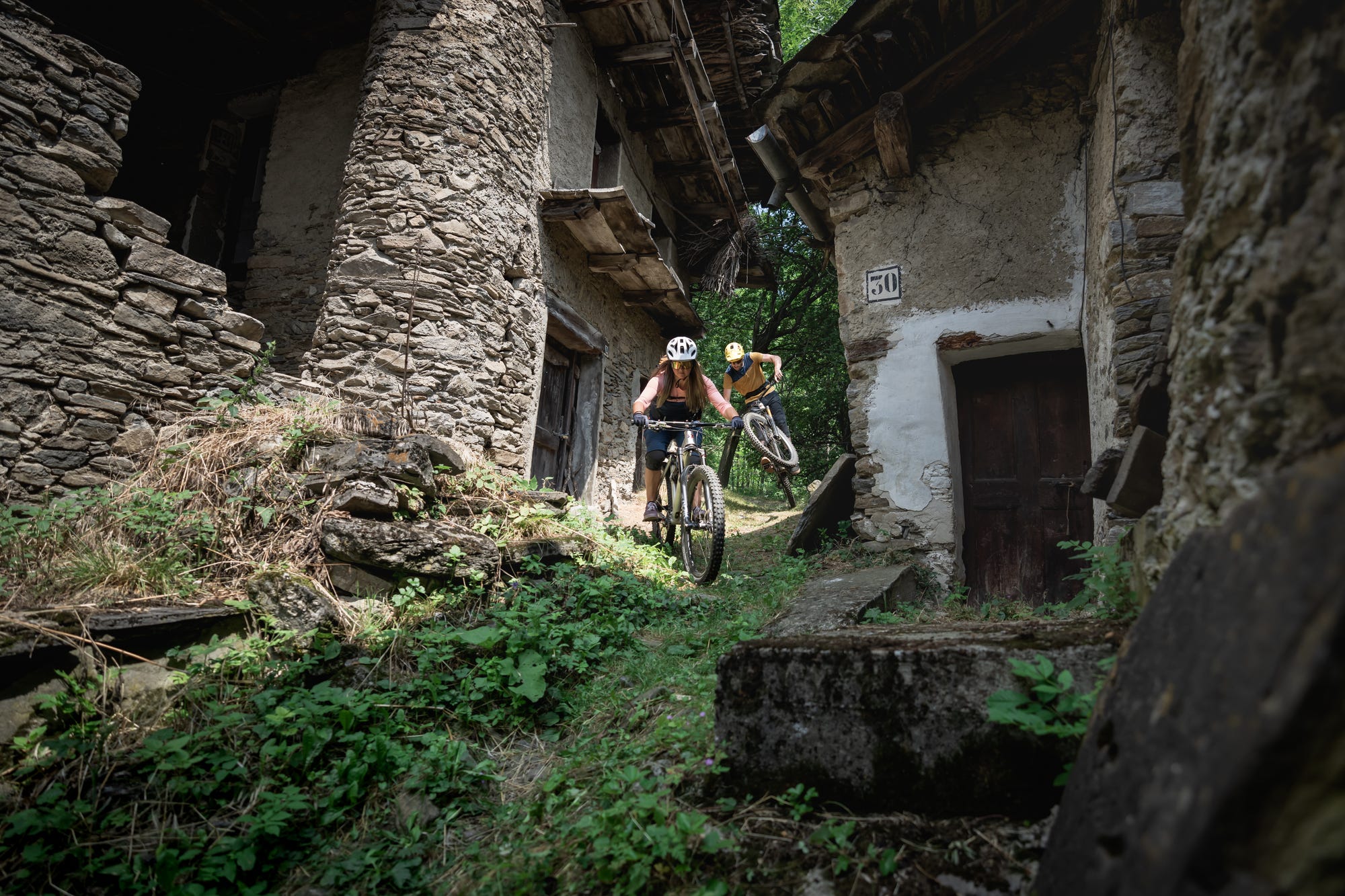

We parked our bikes after riding through the grassy path that once served as the central vein for the 15 or so houses and proceeded cautiously on foot to explore the ghost town. Renato Botte, the co-owner of Locanda Mistral whom we had shared stories and wine with the night before, suggested we take a detour on our ride to visit this village and see a part of the lost community. He had explained how urban flight swept the valley clean of many families, leaving areas completely vacant in favor of the pull from steady jobs in Turin and Geneva. We experienced just one of the abandoned communities throughout Valle Maira, where residents left behind their Occitan roots and culture for regular pay and modern amenities. While these draws are understandable, they didn't make seeing the effects of an entire abandoned village any less moving and, as Stefan put it, "amazing and creepy at the same time."
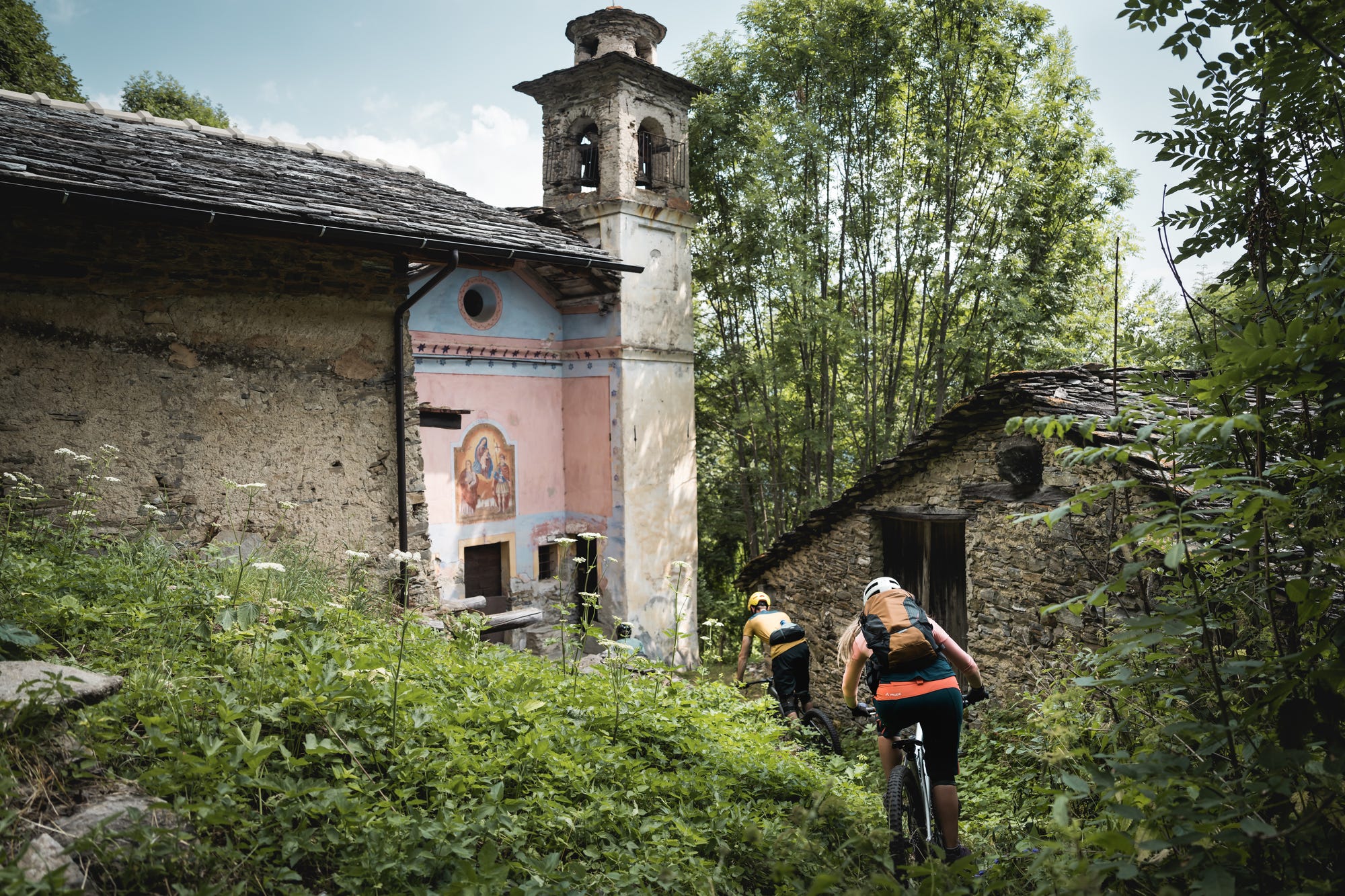

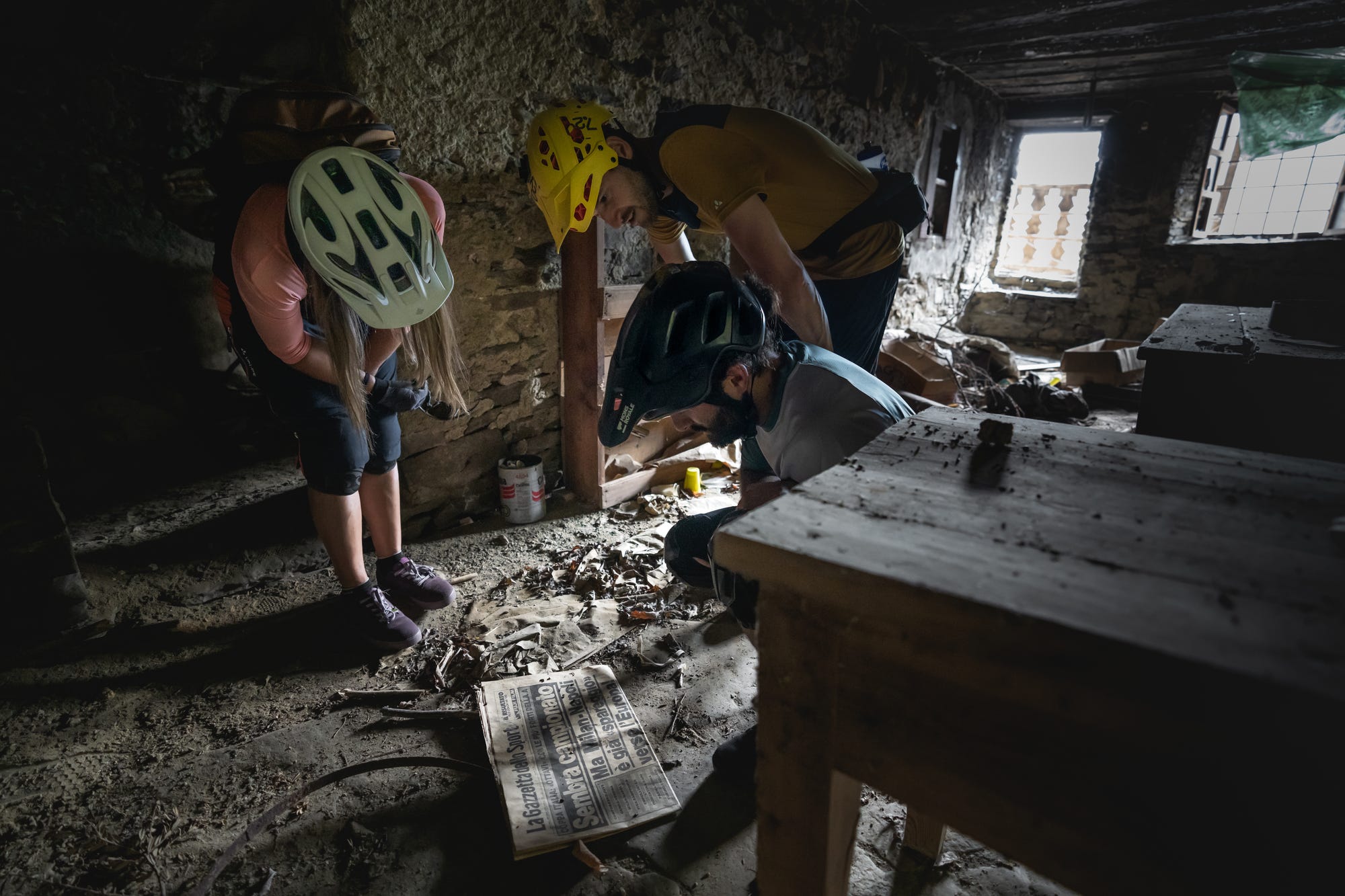

A Shared Vision - Slow Tourism
We spent hours at Locanda Mistral after our rides, sharing food, wine, and conversation around the table, hearing about the history and culture, and learning about the shared vision of the local business community.
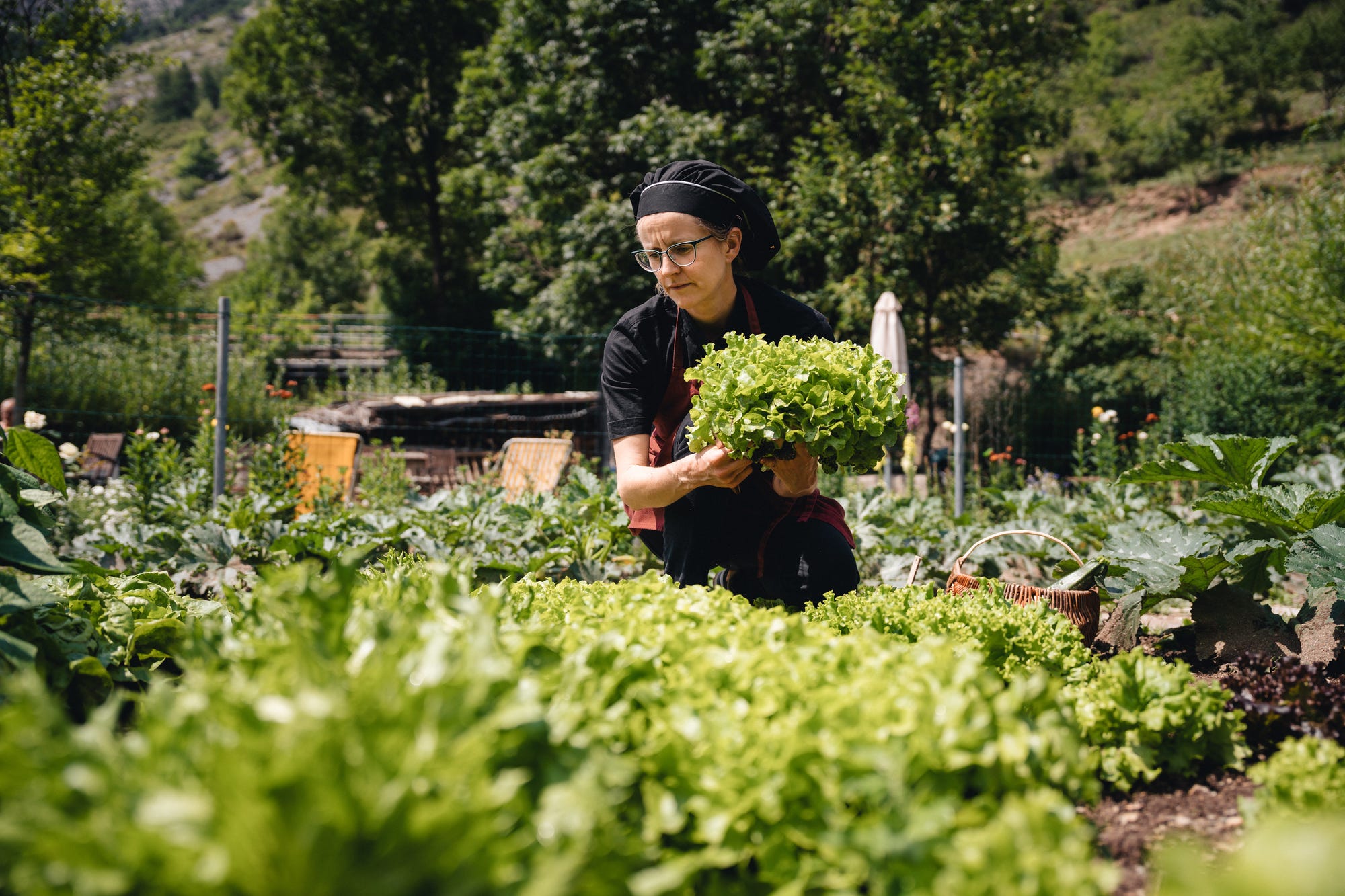

Renato Botte and Manuela Zibana, the owners of Locanda Mistral, are among the local business owners working to create year-round jobs that boost the local economy while preserving the area's natural beauty. Rather than turning the valley into a high-density tourist destination that requires more hotels, beds, and services to support short seasonal peaks, they aim to showcase the valley's splendor throughout the year, including its mild shoulder seasons ideal for biking, hiking, and running. They also work to maintain a balanced local economy that supports one another. The cheese is sourced locally, the wheat is ground in Dronero, and the vegetables are freshly harvested from their gardens. They prepare their pasta, bread, and cakes in-house, and they use sustainable and innovative solutions to embrace the advantages of seasonality, even if it means forgoing the ease of certain luxuries provided by larger chain suppliers.
This sentiment is shared across the valley, as we learned from Valentina Scigliano, from the tourism consortium, one afternoon during a midday break, talking as we savored locally-produced juice at a roadside cafe. "As a group, we prioritize enjoying nature, the local community, and amenities. And by avoiding introducing big supermarket chains, visitors patronize local shops and producers. These actions help people live and work here year-round while enhancing local amenities like healthcare, pharmacies, and schools."
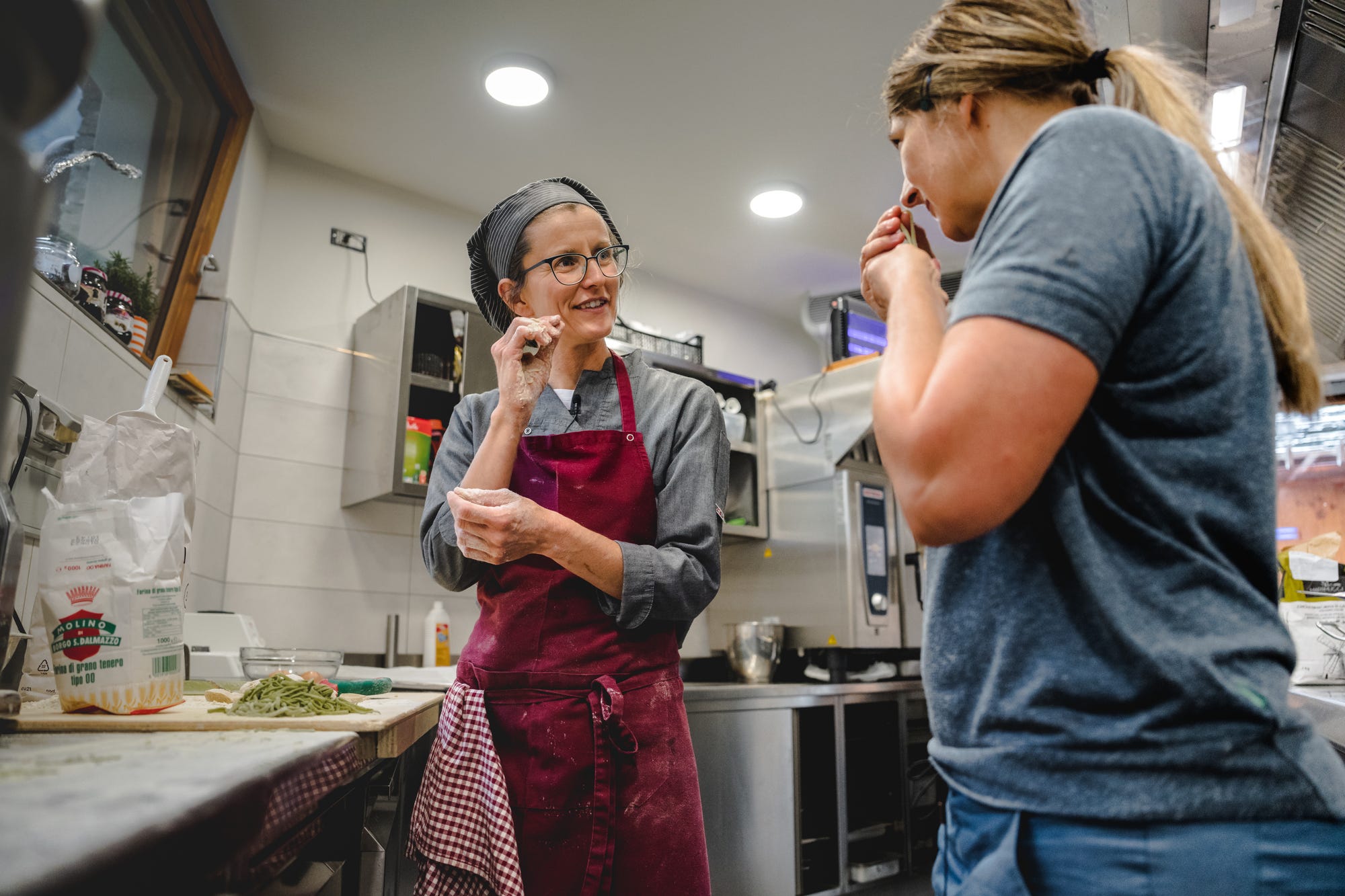

Every day amidst the food and conversation, we hopped back on our bikes, eager to explore new trails and see where our legs and imagination could take us. Riding past clusters of stone houses and old churches on beautiful single track, we appreciated the impact of slow tourism in Valle Maira. As we savored the breathtaking vistas and listened to the calls of marmots, we truly felt the luxury of pristine nature. We were grateful for the locals' commitment to preserving this unspoiled valley, and their efforts to strengthen the small community from within motivated us all to consider our community behavior both at home and in our future travels.
Text: Tristan Hobson
Photography: Tristan Hobson & Flo Gassner
